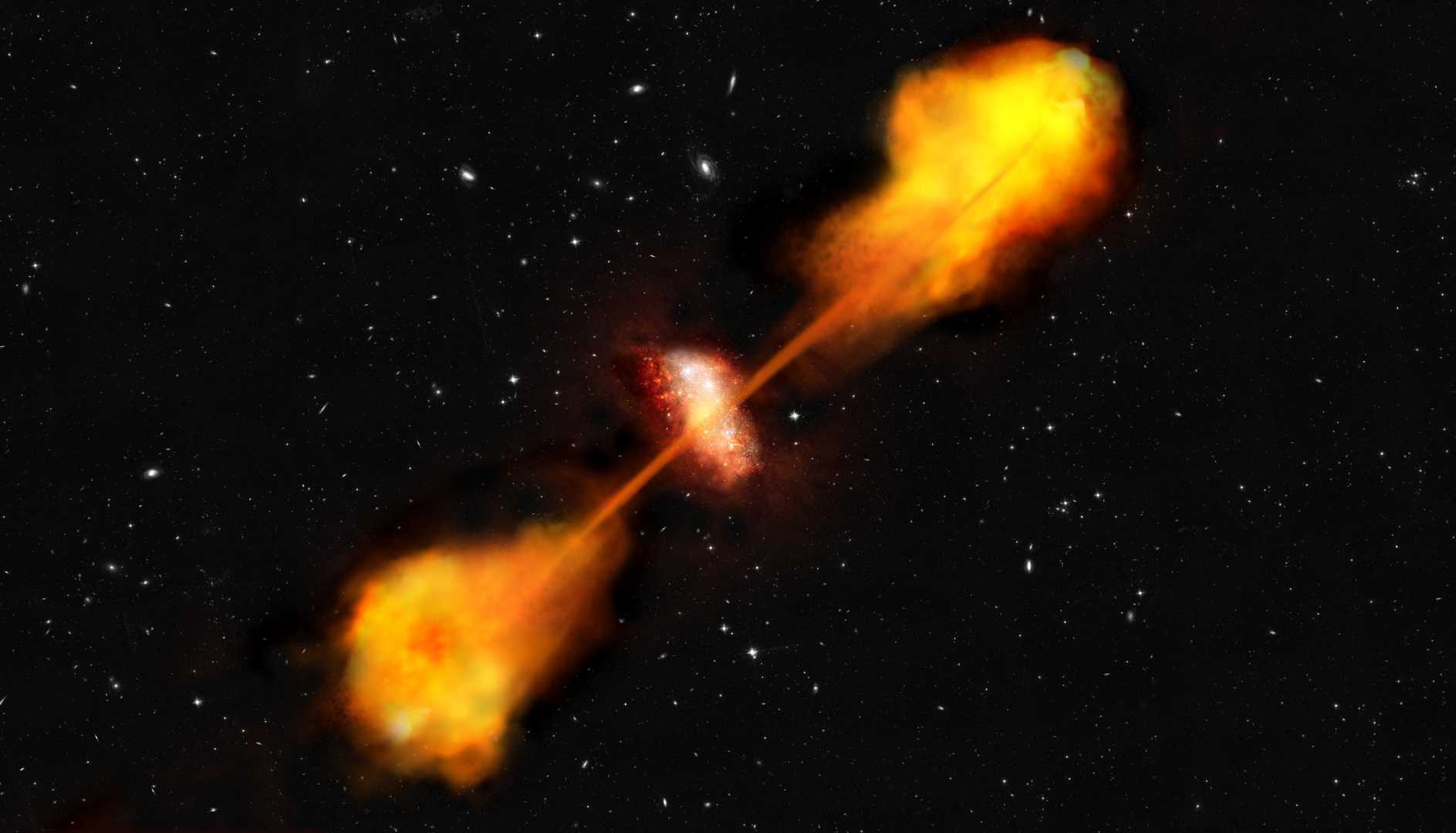News
Breakthrough Discovery of Radio Jet Interaction in Dwarf Galaxy

In a groundbreaking development, researchers from the Indian Institute of Astrophysics (IIA) have discovered evidence of a radio jet interaction in a dwarf galaxy, challenging existing hypotheses about galaxy jets and active galactic nuclei (AGN). This discovery marks the first time such an interaction has been observed in a dwarf galaxy located approximately 14 million light years away.
A radio jet, as elucidated by experts, is a stream of material ejected from the center of certain galaxies at nearly the speed of light, emitting strong radio waves. This phenomenon is believed to play a significant role in regulating star formation within galaxies. Traditionally, it was thought that only large and massive galaxy jets, which host AGN powered by massive black holes, exhibited this interaction.
The Department of Science and Technology has acknowledged that this finding challenges pre-existing theories, presenting a new perspective on smaller galaxy jets. Researchers focused their studies on the dwarf galaxy NGC 4395, where the presence of a radio jet was observed at a scale of 10 parsecs, equivalent to roughly 30 light years, surrounding the central black hole of the galaxy.
“We decided to investigate how the radio jet from a small black hole interacts with the gas in a dwarf galaxy called NGC 4395,” explained Payel Nandi, lead author and PhD student at IIA, under the Joint Astronomy Programme of the Indian Institute of Science (IISc). Nandi, along with her team, utilized a range of data sources, including X-ray data from the Chandra telescope, optical data from the Gemini-North and Hubble Space Telescope, infrared observations from Gemini-North, submillimeter observations from ALMA, and radio data from the Very Large Array.
Adding to this comprehensive data set, information from the UltraViolet Imaging Telescope (UVIT) on AstroSat, India’s first dedicated space observatory, was instrumental. The integration of these multi-wavelength data sets led to the discovery of a unique radio structure resembling a bipolar jet, centered around the black hole’s location. “This jet is relatively weak, but our multi-wavelength analysis of this 30-light year region showed that the jet is interacting with the surrounding gas, and possibly causing shock waves to propagate through it,” stated C. S. Stalin, a co-author of the study from IIA.
The study’s implications extend beyond mere observation, as it provides new insights into jet-interstellar medium (ISM) interactions on very small spatial scales, which was previously unbeknownst. “This study is important because of the discovery of jet-ISM interaction at very small spatial scales hitherto unknown,” added Stalin. The discovery could potentially reshape our understanding of how radio jets impact their galactic environments, irrespective of the galaxy’s size.












